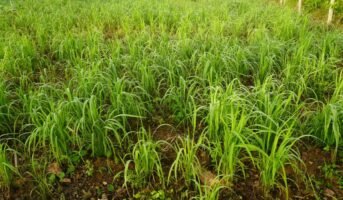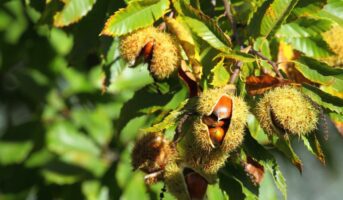Ravenala Madagascariensis is a spectacular plant ideal for both indoor and outdoor spaces that can be grown and maintained very easily.
A species of plant from Madagascar that resembles a banana tree is called Ravenala Madagascariensis, generally known as the Traveler’s Palm or Travelers Palm. It belongs to the Strelitziaceae bird-of-paradise family and is not a real palm (family Arecaceae). Additionally, it is a widespread species in the eastern part of the country. Know about Holoptelea integrifolia: Facts, features, growth, maintenance, and uses
Ravenala Madagascariensis adds an eye-catching touch to your house gardens. However, planting Ravenala Madagascariensis outdoors is excellent as it easily blends in with any decor. Let’s learn how to grow Ravenala Madagascariensis in your backyard, its benefits, special properties, and much more. Know about Tephrosia Purpurea: Facts, features, growth, maintenance, and uses
See also: Know about Iresine herbstii: Facts, features, growth, maintenance, and uses
Ravenala Madagascariensis: Facts
| Name Of Species | Ravenala Madagascariensis |
| Category | Houseplants |
| Family Name | Strelitziaceae |
| Common Name | Traveller’s Palm, Pokok Travelers, Traveller’s Tree, Pisang Kipas |
| Division of the plant | Angiosperms (Flowering Seed Plants) (Monocotyledon) |
| Plant Growth Form | Herbaceous Plant |
| Mode of Nutrition | Autotrophic |
| Maximum growth seen | 9 m to 18 m |
| Maximum Plant Spread | 4.5 m to 5.5 m |
| Native Distribution | Madagascar |
| Preferred Climate | Sub-Tropical / Monsoonal |
| Native Habitat | Terrestrial (Secondary Rainforest, Grassland / Savannah/ Scrubland) |
| Desirable Plant Features | Ornamental Flowers, Ornamental Foliage, Ornamental Seeds |
| Landscape Uses | Interiorscape/ Indoor Plant, General, Focal Plant |
| Companion Plants | Dieffenbachia, Spathiphyllum, Alocasia |
| Bloom Time | Grown for foliage |
| Lowest Temperature | 50° to 80°F (10° to 27°C) |
See also: Know about tibouchina urvilleana: Facts, features, growth, maintenance, and uses
What are Ravenala madagascariensis?
Ravenala madagascariensis belongs to the Ravenala genus, a class of grass-like flowering plants called monocotyledonous. The plant widely grows in Madagascar. Its natural habitat includes humid lowland forests, montane forests, grassland, and rocky regions, from sea level to 1,500 meters elevation.
Why is it known as Traveler’s Palm?
As the stems may retain rainwater for use as a source of drinking water in an emergency, it is known as the traveler’s palm. On long petioles, the large paddle-shaped leaves are carried in a peculiar fan-like structure aligned in a single plane. The flowers are tiny and barely noticeable, in contrast to their near relative, the bird of paradise. The plant is commonly cultivated for its unique leaf in tropical and subtropical areas.
White, spectacular flowers with 3 petals resemble the closely related Strelitzia genus. The flowers lead to woody capsules that contain blue-colored flesh covering the edible seeds inside.
This plant, native to Madagascar, can reach heights of over 15 meters and a width of 3 meters. It is typically too big to be planted in gardens, but if given enough space, it can create a lovely, showy focal point in parks and other expansive landscapes. It can be planted in containers, but it restricts plant size and makes overwintering in frost-prone areas difficult. It is delicate and can’t abide freezing temperatures.
The only species of its genus, Ravenala Madagascariensis, is closely linked to the genus Strelitzia and Phenakospermum in Southern Africa and South America. In some earlier classifications, these genera are included in the banana family (Musaceae).
see also: Know about Paulownia tomentosa: Facts, features, growth, maintenance, and uses
Ravenala Madagascariensis uses
The traveler’s palm is regularly grown with decorative intentions. Due to the two rows of leaves, the appearance of a massive fan is created. The names given to plants in local dialects reflect their alleged usage by tourists, who reportedly drank rainwater gathered in the petiole’s basal cup and flower bracts. Anyhow, due to pollution from debris and mosquito larva infestation, this water is usually considered as unfit for consumption.
You can plant Ravenala Madagascariensis in your garden as it offers numerous benefits. The leaves, petioles, and bark of Ravenala Madagascariensis are utilized for roofs, walls, and floors in homes along Madagascar’s east coast, which is economically significant. In some areas of India, the limb is used to build houses, the leaves are employed as packing material & roofing, & the petioles and midribs are used to build hut walls.
The fluid of the trunk can be used to make sugar. Although the kernels are edible, they are mealy, & edible arils lack taste. The oil of the seed reportedly has antibacterial properties and is occasionally used in cooking. Sometimes, the trunk’s pith is used as cattle feed.
Ravenala Madagascariensis properties
The seeds’ & arils’ respective oil contents are 4% & 68%. Oleic acid makes up 39% of the oils’ fatty acid composition, while palmitic acid makes up 34–42% of them, making them a probable source of vegetable butter in small quantities.
Ravenala Madagascariensis description
Ravenala Madagascariensis is medium-sized tree that can grow to a height of 20(-30) m; its roots are rhizomatous; its trunk is woody, cylindrical, olive green, ring-scarred, & smooth or grey and fissured; the bases of its leaves cover the apical third of its trunk, and its crown is fan-shaped and has 20 or more leaves.
Growth and development of Ravenala Madagascariensis
Sheaths are generally the only leaves present at the bottom of new shoots. The blade is tightly rolled when each fresh leaf develops within the sheath of the one before it. A fully extended leaf frequently has somewhat uneven sides, or the blade base is asymmetrical. Although it may take up to 10 years before the traveler’s palm begins to bloom, this does not detract from the plant’s ornamental value because it is grown for its foliage.
In an inflorescence, a fresh flower opens every 2 to 3 days. The total count of open flowers varies, with a total of up to 29 open flowers having been recorded. Usually, the flowers bloom at night. The production of nectar is abundant, peaking at midnight. Many lemur species pollinate the traveler’s palm in Madagascar, including the black lemur (Eulemur macaco) and the ruffed lemur (Varecia variegata).
During various seasons of the year, lemurs seem to be quite reliant on the nectar of the traveler’s palm. Large bats like Macroglossus Lagochilus and Pteropus Alecto Gouldii, and honeyeater birds (Megaphagidae) in Australia, frequently visit flowers outside the species’ natural range.
By interlocking papillae, the two abaxial petals are joined to create a tube around the anthers. When they part at anthesis, there is an explosion that scatters pollen onto a possible pollinator. Ravenala Madagascariensis was discovered to be an alternative self-fertilizer through autogamy treatment.
Propagation and planting of Ravenala Madagascariensis
Propagation is by suckers and seeds. It is ideal for sowing seed at around 20°C on damp, sandy soil. Planting organic matter during planting prevents the roots from drying out. Seedlings 2 to 6 months old are placed in deep, rich loamy soil and planted in full sunlight. Near the parental stem, suckers develop at random intervals. At the start of the wet season, rooted suckers are separated and planted into fertile soil for rapid growth.
How to grow Ravenala Madagascariensis in your backyard?
If you wish to plant Ravenala Madagascariensis at your house, follow the instructions carefully:
- Planting Method
Begin with a high-quality premium potting soil. These are frequently more hygienic, pest-free, & lighter than topsoil. These are a blended with moderate starter fertilizers. If a container doesn’t have a drainage pathway, be prepared to dig one.
Up to 2″ (or 5 cm) or less from the planter’s rim, prepare the container by adding potting soil. Next, the plant must be taken out of the pot.
Dig a little hole in the garden that is slightly bigger than the ball of the root by hand or with a trowel. When planting Ravenala Madagascariensis, cover the root ball with just enough soil to tightly cover the roots. Once every plant has been potted, give a healthy start by watering them regularly. Subsequently, put the plant in a location that receives consistent sunlight.
Every 2 years, repot your plants in a similar container or one that is a little larger than the roots’ diameter.
Ravenala Madagascariensis cultivation
The plant must be grown in an area that receives adequate sunlight but not full sunlight until it is larger. It prefers fertilizer rich in nitrogen during its growing season. This helps in its healthy growth and production of good foliage. The plant can attain an average height of 7 metres (23 ft) and needs moderate watering.
How to care Ravenala Madagascariensis?
- Sunlight requirements
The plant needs full sunlight for its proper growth.
- Watering Instructions
Choose wet, well-drained soil. Then with your finger, feel the soil’s dampness. Watering is necessary if the soil’s top 2 to 4″ (5-10cm) looks dry or if the plants are showing signs of wilting.
To prevent wetting the leaves, try to apply water up to the soil level. Thoroughly moisten the soil until the water is dripping from the pot’s base. This shows how soaked the earth is.
- Fertilizing Instructions
Fertilizers come in various forms, such as slow-release, synthetic, granulated, organic, and liquid feeds. First, select one with a nutritional balance designed for leafy plants, then choose the best application method for the situation.
Because too much fertilizer can hurt plants, it’s important to adhere to the recommendations on the fertilizer carton when determining how much and how regularly to feed Ravenala Madagascariensis.
Slow-release fertilizers are a great, hassle-free choice for container plants. Frequently, a single application will provide plants with the proper level of nutrition for the complete season.
- Pruning Instructions
Ravenala Madagascariensis can be grown in containers and can be frequently trimmed to keep the proper size and shape. Maintaining a trimmed foliage also keeps the plants look more organized, promotes the growth of additional side shoots & blooms, and reduces the need to develop a deep root system. This is crucial since the roots are in a tiny area.
- Temperatures
The plant has a narrow temperature tolerance. Temperatures dropping below 60 degrees Fahrenheit can begin to damage it.
Bottom Line
For the local population, Ravenala Madagascariensis represents the historical and cultural use of the plant for building houses that is significant to the Ambalabe communities. Additionally, no component of it is thrown away. A family’s additional source of income may come from the collection and sale of Ravenala Madagascariensis for use as building materials.
Ravenala Madagascariensis is an ideal plant to be grown in your garden or backyard. It has multiple medical benefits as well. Also, it can be used for house construction purposes. By purchasing Ravenala Madagascariensis seeds from the nursery, you can enhance the outdoor beauty of your garden!
FAQs
How fast does a traveler's palm grow?
The growth rate of Ravenala Madagascariensis is quite good. Generally, it can grow more than 1metre annually.
Is Ravenala Madagascariensis an indoor plant?
Yes, Ravenala Madagascariensis is a disease-resistant indoor plant. You can easily plant this in your house.
Is Ravenala Madagascariensis poisonous?
Ravenala Madagascariensis is widely said to be a toxic plant for humans and animals. Therefore, it is advised not to consume a leaf from your palm tree.
Which direction do travelers' palms grow?
Ravenala Madagascariensis tend to grow in an east-west direction.
What is the lifespan of a palm tree?
Palm's tree average lifespan is between 7 to 8 decades.
Housing News Desk is the news desk of leading online real estate portal, Housing.com. Housing News Desk focuses on a variety of topics such as real estate laws, taxes, current news, property trends, home loans, rentals, décor, green homes, home improvement, etc. The main objective of the news desk, is to cover the real estate sector from the perspective of providing information that is useful to the end-user.
Facebook: https://www.facebook.com/housing.com/
Twitter: https://twitter.com/Housing
Email: [email protected]











